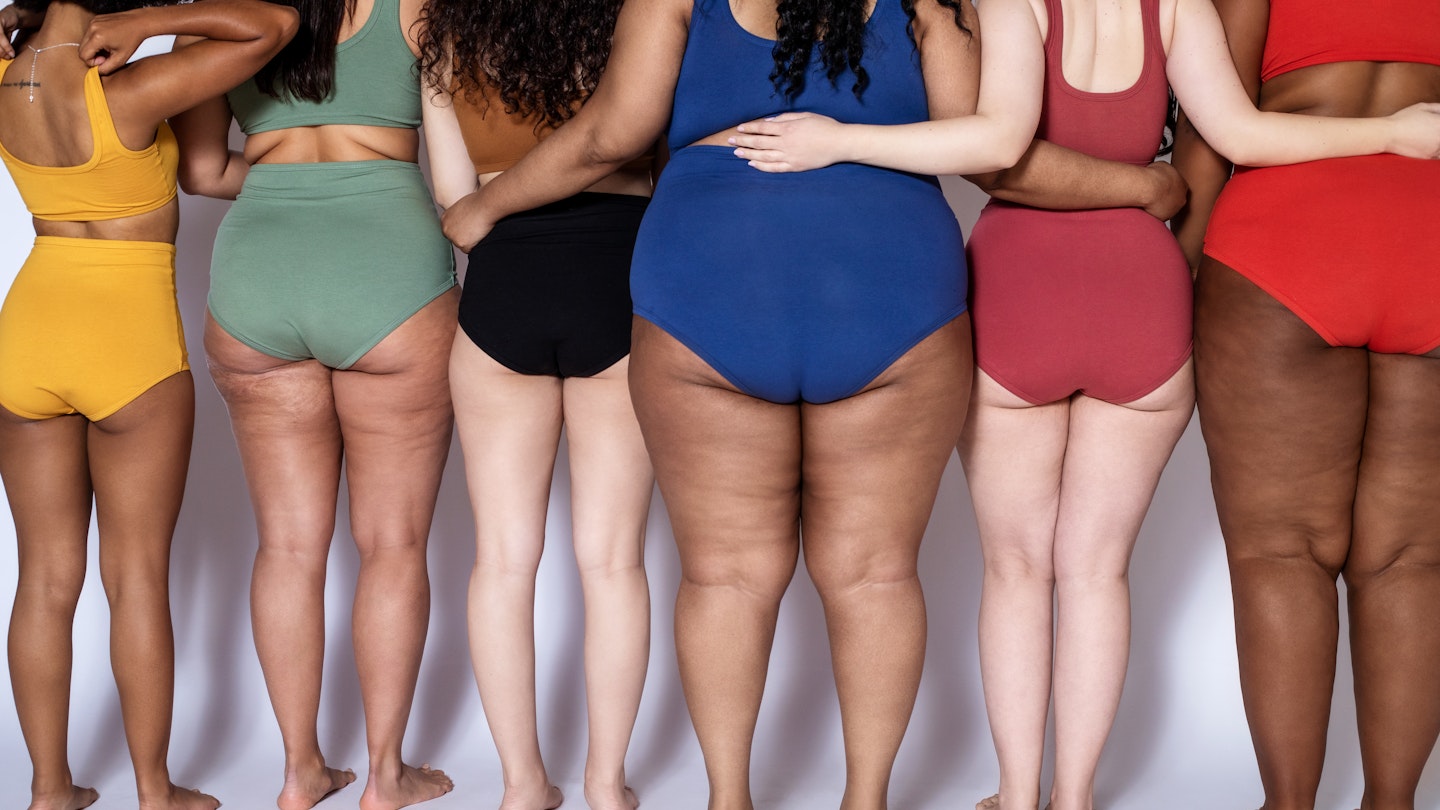If you’ve never heard of the term mid-size, likelihood is you don’t have TikTok. The video-sharing app has started an abundance of trends, the most recent being an obsession with ‘mid-size’ bodies.
What does mid-size mean?
That is, women that sit between the fashion industry’s straight-size (definitions differ, but it is often described as anything below a UK 10) and plus-size (anything above a UK 18); mid-size represents women sizes 10-16. Essentially, it’s those bodies you assume clothing brands cater for until you try on a pair of size 14 jeans that have been modelled on a size 6 and the waist-bum ratio simply doesn’t add up.
What many would consider average-sized bodies (the average size for a woman in the UK is a 16) now have their own movement, all because despite representing the majority of sizes women wear, there are few brands that actually model clothes for them.
Essentially, it’s a tangent of the body diversity movement created for plus-size women. Of course, that comes with its pitfalls. While strides have been made in the body diversity and positivity movements in catering towards plus-size bodies, there is still a lot of work to be done. Most brands still don’t stock sizes for plus-size bodies, nor do they create styles that are actually flattering on varying shapes.
That’s why some people are rightly concerned by the mid-size movement, because regardless of how few brands actually make clothes for women sizes 10-16, there are still a lot more than those who cater to plus-size women.
It’s an important conversation to have, but it hasn’t stopped the mid-size content thriving on social media. Because, while it may be trending on TikTok, it all started on Instagram.
An account with near 40,000 followers, @midsizecollective is the Instagram page credited with starting the mid-size movement. Founded by Anushka Moore, the bio reads ‘the original home of not petite but not plus-sized style. Repping the size 10-16 babes’.
It features mid-size women modelling their latest purchases, highlighting mid-size friendly brands and celebrating bodies that are rarely seen on the pages of your favourite clothing brands.
Because, when you sit somewhere between straight-size and plus-size, there are a whole host of ways shopping can be a frustrating experience. From the lack of standardised sizing across brands (I currently have sizes 6-16 sitting in my wardrobe) to the lack of average-looking bodies wearing them on ecommerce sites, when there’s no specific range for your body type – it can be a minefield.
Looking at the page, you can see there is zero intention to take away from the plus-size movement, it’s just another platform to rejoice the shapes and sizes that we don’t often see on screen. Another force in the body acceptance and diversity movement that can show brands that actually, making clothes to fit our range of bodies is not just the right thing to do, it’s profitable too.
Models once hailed as plus-size icons are often actually mid-size.
It also serves to highlight how the plus-size movement has been co-opted by brands that simply do not understand it. While they may start making clothes in bigger sizes, they typically use models that are actually midsize. Ashley Graham, for example, who has spoken out against being called plus-size but was once hailed as the Queen of plus-size modelling, is actually a size 16. Iskra Lawrence, another model who hates the term plus-size but has been called it time and time again, is only a size 14. Check out any list of the ‘best plus-size models’ and you’ll see, most of them are not size 18 or above.
The midsize movement serves to remind the fashion industry then that actually, they’re doing a disservice to plus-size bodies by using models that aren’t plus-size and in turn, putting women into categories they simply do not fit into in ways that are inextricably linked to our self-esteem. If you’re a size 20, only seeing plus-size clothing modelled on size 16 bodies – how does one feel when the clothes don’t look the same on you?
So, while there are definitely conversations to be had around the mid-size movement, understanding how many women identify in one category or the other can at the very least provide data and research for brands to actually make clothes that we not only can wear, but feel comfortable wearing.
Read More:
I Have A 30-Inch Waist, So Why Do So Many Shops Think I'm A Size 16?
